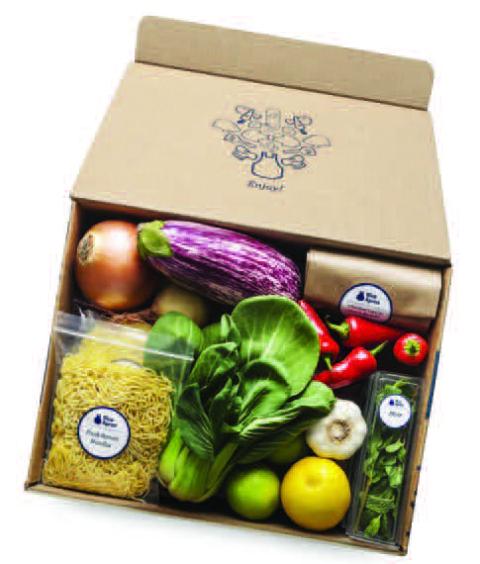Category Spotlight: Meal Kits

What you’d think would be a slam dunk for grocers continues to be a work in progress as grocery retailers attempt to make a go of meal kits, searching for a profitable middle ground somewhere between the flailing subscription model and the in-store solution that leverages the broad competencies of the supermarket.
Since they launched in the United States more than five years ago, “time has tempered both growth and expectations for meal kits, though the future remains promising,” says market researcher Packaged Facts, which, in its report “Meal Kits: Trend and Opportunities in the U.S., 3rd Edition,” forecasts that the meal-kit category will continue to expand and grow healthily over the next four years, but at rates more modest than previously anticipated.
Packaged Facts estimates the U.S. meal-kit market had sales of $2.6 billion in 2017 and would grow almost 22 percent by the end of 2018 to reach $3.1 billion. Growth is forecasted to steadily decline from double-digit gains over the next few years to single-digit gains by 2023.
DISCOVER THE 2019 DATA
Long term, as more traditional stores offer meal kits as a product rather than as a service, Packaged Facts contends that the market will stabilize and become similar to other convenience grocery items that sell for a premium, such as precut fresh produce.
“The meal-kit market is highly dynamic and prone to fluctuations, with the top meal-kit providers falling in and out of favor since their introduction in the past few years,” says David Sprinkle, research director for Packaged Facts. “Further complicating things, market expansion is expected to be much more reliant on alternative purchase venues than the traditional subscription delivery model, due in part to the convenience and flexibility of online shopping.”
To be sure, grocery retailers have been investing in the category. Last May, The Kroger Co. and its Home Chef subsidiary added three new options to the meal kits already sold in more than 900 stores across the country: Oven-Ready meals, designed to serve two people for $8.50 per serving; Heat & Eat meals, ready in five minutes; and Lunch Kits, a range of salads, grain bowls, sandwiches and tacos that run about $6 per serving.
IN-DEPTH ANALYSIS
Read our in-depth analysis of some of the other categories in this year's study, including:
Ahold Delhaize USA’s Peapod partnered with cookbook author Mark Bittman on an exclusive Vietnamese-inspired meal kit, Fast Pho. According to Peapod’s third annual meal-planning forecast, more than 40 percent of Americans value meal kits as a tool to make cooking at home easier, with other welcomed shortcuts including premeasured ingredients and grocery delivery.
On the other hand, Albertsons-owned meal-kit service Plated laid off 25 staffers, following the January departure of its CEO, and pioneering service Blue Apron experienced an executive shakeup in April.
“The current meal-kit business doesn’t seem to be winning the mealtime battle for retailers, so it’s time for retailers to rethink their meal-kit strategy,” argues Dr. Marcia Schurer, president of Chicago-based Culinary Connections, a food consulting and training company specializing in convenient fresh prepared foods, meal solutions and snacks.
Schurer suggests moving from offering a limited number of SKUs for dinnertime to a storewide strategy that includes ready-to-eat, -heat and -cook; made-to-order; already prepped; and value-added options for all dayparts.
Total Meal Solutions
Dr. Marcia Schurer is slated to speak about winning the battle for mealtime profits with meal kits at Progressive Grocer’s Total Meal Solutions Summit, Sept. 9-10 in Austin, Texas. Find more information and register to attend at www.totalmealsolutions.com.
“With questionable track records for sales and profitability, it’s time for retailers to pivot and come up with different options with greater customer appeal, popular taste profiles, fresh and local ingredients, can be customizable, fit dietary lifestyles, priced reasonably, encourage repeat purchases, and encourage the purchasing of complementary items from perishable and nonperishable store departments, to increase each customer’s mealtime purchase and total store sales,” Schurer urges.
A key demographic that shouldn’t be overlooked: older adults, for whom meal prep may be a challenge.
“Sales of meal kits to older consumers compete with delivery or carryout meals from restaurants. Many older customers already order a lot of food from restaurants,” says Packaged Facts’ Sprinkle. “However, many of these customers may miss being able to cook or could benefit from a simplified cooking process. Additionally, the restaurant and home delivery options available for them might not be as healthy or as fresh as they desire.”





